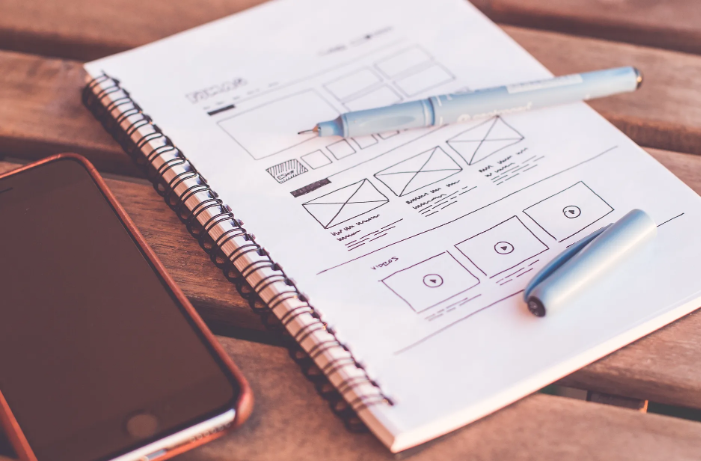Last Updated: February 7th, 2024
UX Designers (User Experience) help execute the combination of activities including usability, desirability, and usefulness to support the users as they use your product. The designers perform numerous tasks in association with design aspects for a particular project.
The primary deliverables of the UX Designers (User Experience) during the accomplishment of the tasks include the title page design, features, wireframe introduction, and the entire history of the version. Furthermore, the associated documents include the user stories, flow model, cultural model, and research.
Most importantly, there is a list of follow-up procedures up to the product launch. The vital steps under the series include A/B testing, user testing/ usability testing, the architecture of the information, sitemap generation, user flow implementation, and additional wireframing procedures.
The team includes specialist designers under different domains such as user interface designers, interaction designers, video game developers (specifically user experience developers), and a few others. Last, but not least, the professionals involved in the design process dedicatedly integrate the product after acquiring a phenomenon. The branding of the product including usability, functionality, advertising, and marketing is also kept in mind.

Tools Used by the UX Designers
1. InVision
InVision is one of the best and feature-rich prototyping tools for organizing project design components into the status workflow. The designers feel empowered to set several columns as per their desire including Needs Progress, To Do, and Approved, along with several drag-and-drop functionalities.
Moreover, the tool helps in making static images into animated ones, along with the functionalities of adding diverse file types with formats like JPG, PNG, GIF, PSD, and a few others. The tool supports a faster real-time design process with the best efforts. The greatest icons like Uber, Twitter, and SalesForce use this tool for promoting their design process. The platform smoothly runs on the web, with the prototypes applicable for Android, Web, and iOS. As per the project, there exists availability for both the free, as well as the paid options along with the software tool.
Steps To Follow For Launching A Successful Mobile App
2. UserTesting
UserTesting tool helps UX designers get relieved from the unwanted hassles of prototyping testing and user research processes. No need to worry about the target users as the tool itself does the procedures along with the remote administration of the tests and delivering the efficiently developed outputs within hours.
The tests are available with the dedicated video of the applicable users. It lets you analyze the outputs based on emotions and facial recognition. The service of UserTesting is applicable for platforms like sites, and apps. One can even consult the dedicated technological team for doing the test designs. They can even assign a particular project manager to keep the project going without any difficulties.
10 Best Interior Designing Apps For Your Home
3. Sketch
Sketch is another widely used tool by dedicated UX designers for OS X, iOS, and Web, like prototypes. The designers get the functionality similar to the Photoshop software, to edit and manipulate the photographs in numerous ways. The tool is helpful in the elimination of countless handheld tweaks and thereby saves precious time. The sketch is well-equipped with vector-based workflows letting the designers create high-quality artwork from the initial to the final stage without any hassles.
The copying and pasting of the repeating elements like bubbles and buttons can easily be done using this tool. As per the executable platform is concerned, Sketch’s compatibility is available for OS X, with a free trial availability. One can get the paid one at $99 only for having access to a complete version.

4. WebFlow
WebFlow tool for UX designers is compatible with Web-based interfaces. One can have the tool for free, even after paying the applicable amounts for personal and professional uses. The designers and the users never need to write even a single line of coding, and thereby it offers robust features in favor of the users. The individuals can entirely design the website and publish as well with the best available features like web animations, and responsive website design faces.
The prototypes can efficiently be hosted over the WebFlow interface. Moreover, code exporting is also possible via CSS, HTML, and JavaScript like freeware. So, never worry about it, start the process with the blank canvas sheet, and get to choose the applicable templates among hundreds of available ones. The CSS logic and the Automatic Slicing features are the other available assets under the interface.
5. Atomic
Atomic is another web-based tool compatible with all the prototypes. The execution of the app is done on the web-based interface and one can have the tool both for free and paid as per the requirements.
The users need to have Google Chrome for sure to access this best utility tool. As the tool is not a desktop application, users of other browsers like Mozilla, Safari, etc, cannot get access. It offers the best control and flexibility to the users with a one-click feature to notice the animations and changes. There even exists a shared prototyping feature along with the ‘History’ viewing specifications. Get to see through the previous iterations, and start a brand new initiative from scratch.
6. PhotoLine
PhotoLine is one of the underprivileged tools but works equivalently like the other tools for photo manipulation, desktop publishing, and other applicable features. Moreover, the EXR importing and exporting facilities even make the tool robust for use. The app is also available at a cheaper price with the maximum set of compatible features. The already existing users of this tool never want to shift or migrate to another alternative owing to the available versatility within it.
To sum up, the article mentions the detailed work analysis of the UX Designers (User Experience), along with the best available tools used by them for different purposes. More than the above, there are several other tools including Principle, Optimizely, XMind, Slack, Mural, etc to meet the requirements.
